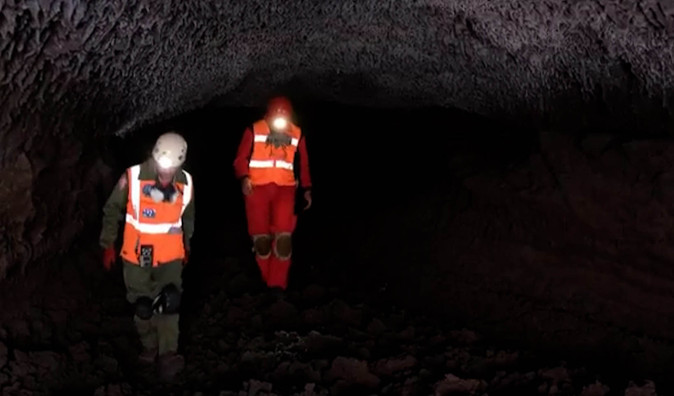- Science Volcanic eruption at the Cumbre Vieja of La Palma
- La Palma The Christmas gift of the volcano of La Palma: "The eruption is over"
A specialized team of Volcanic Speleology has been able to enter one of the main galleries of the system of lava tubes formed by the last eruption of the Cumbre Vieja volcano, and have entered 80 meters through it.
The gallery, called "red tube", because of the color of its walls, is located in the most superficial layers of the castings.
The eruption of the volcano, which began in September 2021 and ended in December of the same year, has left solidified lava flows that have created galleries of different sizes that the team, formed by speleologists from the Canarian Federation and researchers from the National Geological and Mining Institute Center of Spain (IGME-CSIC), has begun to explore.
According to scientists, the lava has cooled earlier than expected, thanks to air currents, at least in the wider galleries.
Most of the system cannot be explored due to the too high temperature inside the tunnels, but it is thought that the deepest would reach the sea. The castings have reached in some parts 70 meters thick.
It is also believed that the lava system of the volcano would be labyrinthine and two of the intermediate tunnels could be vertically interconnected.
How is a lava tube formed?
When a volcano erupts and emits a lava flow that travels through terrain at moderate speed for long enough, the air solidifies the surface layer of the lava.
Thanks to this phenomenon, the lava maintains its melting temperature below the solid layer and continues to flow over long distances.
Little by little, the lava flow descends and the cavity between the solid roof and the incandescent river begins to form. Depending on the amount of lava that solidifies, the gallery will be of greater or lesser internal dimension.
- The Palm
- La Palma Volcano
- Canary Islands
According to the criteria of The Trust Project
Learn more

